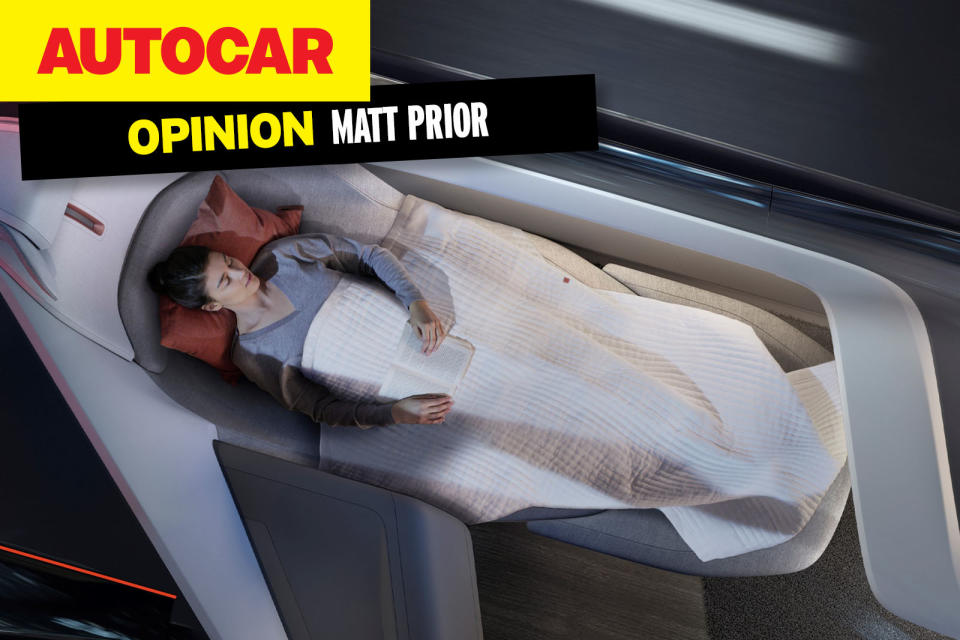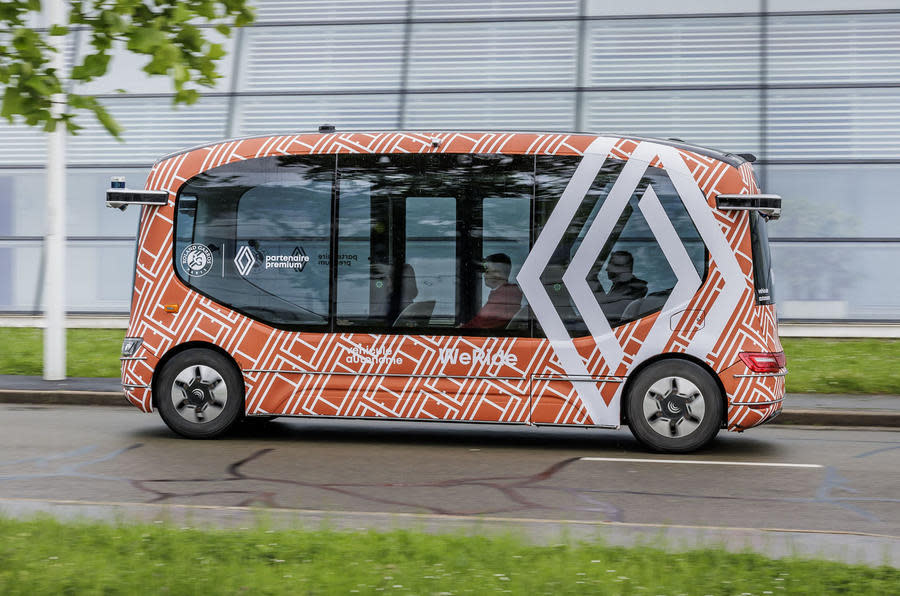Self-driving isn't dead, but the autonomous car might be

A commute like this will remain the stuff of dreams – for now, at least...
In principle, I like the idea of an autonomous car. Not for when I get into a sports car or classic car or climb onto a motorbike and want to enjoy driving and riding, which, amazingly, even on today’s roads, are still two of my hobbies.
But for when I’m very old and my neck is too stiff to look over my shoulder and there’s still no local bus service, imagine how handy a self-driving car could be for taking me to queue up at the doctor’s. Or for when I’m going to the office or home from the pub, or whenever I’m on a deadline and the M25 is calling, wouldn’t a self-driving car be helpful? Seat back, screen on and let everything else happen. It’s a wonder that Netflix isn’t developing them.
Alas, there are problems. Last week, Renault said developing its cars beyond the current level-two phase of driving assistance systems is “unlikely for the time being” because of the costs of technology, regulations and customer expectation around taking the tech further. Renault talks of a “significant technological complexity gap” between where we are now and where we would need to be for a car to operate “in complex environments” and with – and here’s an important phrase – “limited driver supervision”.
‘Limited’ is in itself a roadblock to adoption of these systems, because if they need any kind of driver supervision, there’s an end to how useful they are – and how much people are prepared to pay for them. If you still need to have your eyes on the road, you may as well have your hands on the controls in some way too if you’re the one going to court after a crash.
No, the holy grail, which seems to be an even further technological leap away, needs to be both hands-off and eyes-off, with the car’s maker accepting all responsibility for anything that goes wrong in the meantime. Because, as Volvo once told me, the handover from the car back to the driver is something that can take “minutes, not seconds”. And an autonomous car that might suddenly want help negotiating a corner on which it has suddenly discovered a horse walking one direction and a family cycling the other isn’t really autonomous at all.
It’s not that cars don’t already drive themselves, to an extent, on existing technology. Every day, I have to turn off a system that tries to tug the steering wheel from my grip on every country road. And last week, another system slammed on the brakes while I was reversing because a pedestrian 30 metres away looked at my car funnily. This isn’t the technology that’s going to take me from home to the office while I go back to sleep.
The technology that is going to do that costs “shit loads of money”, Polestar CEO Thomas Ingenlath told us last year, and would “not be good for a private person to invest in”.
Renault clearly thinks the same, because it has now moved on to thinking about using the tech on buses, where it’s viable if it saves serious money elsewhere – namely on paying drivers.

If a bus, or a works van or truck or taxi, is driven by two or three different drivers per day, it’s the staff, not the vehicle or its fuel, that are the biggest running costs. Therefore it doesn’t matter if the self-driving technology on a bus that lasts for 10 years costs many hundreds of thousands of pounds per vehicle if, by fitting it, three drivers suddenly find themselves redundant.
This is why self-driving vehicle tests continue around the world. They’re not for the likes of you and me. As Ingenlath said: “Leave that to Waymo or whoever.” Only they can realise the profits by laying off drivers or by introducing vehicles to routes that would otherwise be unviable.
If you want to doze off on a journey, there’s how to do it. In your own car, prepare to keep your eyes open for a little while longer.
]]>

 Yahoo Autos
Yahoo Autos 